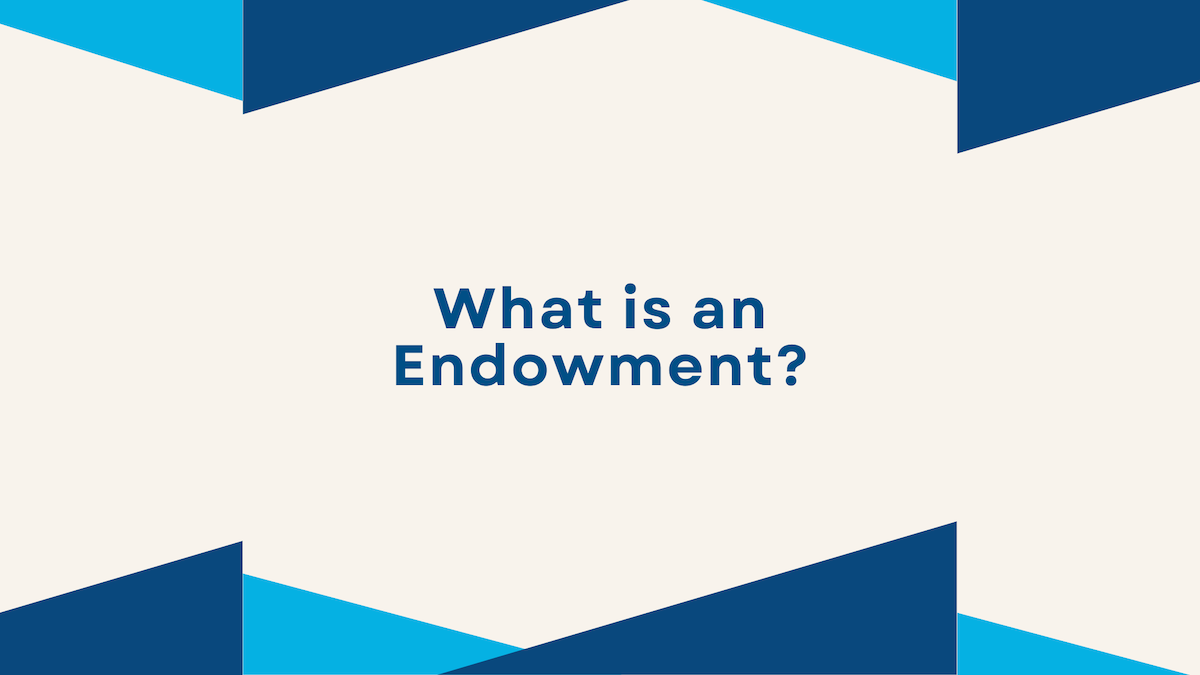An endowment is a financial asset, typically in the form of donated funds or other securities, given to institutions like universities, nonprofits, and religious organizations to fund their ongoing work and support their long-term stability.
Endowments are crucial because they provide a consistent revenue stream for organizations, helping them fulfill their missions even in times of financial uncertainty.
But what makes an endowment unique, and how does it work?
Let’s break down the concept of endowments, exploring their structure, purpose, and significant impact.
What is an Endowment?
An endowment is a fund established by a donation or a group of donations meant to be invested and used for the ongoing financial support of an organization.
Unlike typical donations that are often spent immediately, endowment funds are generally intended to be preserved indefinitely, with only a portion of the returns on the investment being spent each year.
This approach enables the organization to benefit from the endowment over the long term, providing a stable financial foundation.
How Does an Endowment Work?
Endowments operate based on a structured financial model where the principal amount, or the initial donated funds, is invested in various assets like stocks, bonds, and real estate.
These investments generate returns, which become available for the organization’s use while keeping the principal amount intact. Typically, endowments follow a set spending rate policy that dictates how much of the investment income can be utilized each year, usually around 4-5%.
This controlled spending ensures that the endowment can continue to grow and provide funds far into the future.
Nonprofit Resources
The Charity Charge resource hub is dedicated to providing tips, tools, and information to help your nonprofit create and grow a modern organization. Learn more
Types of Endowments
There are several types, each with unique structures and purposes:
- Permanent Endowments: The principal of these endowments is intended to remain untouched, providing perpetual support for the organization. Only the generated income is used, adhering to specific guidelines to ensure long-term financial health.
- Term Endowments: These funds are similar to permanent endowments but are designed to be used for a set period or purpose. After the term ends, the principal may be used, depending on the donor’s stipulations.
- Quasi-Endowments: Often established with funds from an organization’s general reserves, quasi-endowments are not donor-restricted. Organizations have more flexibility with these funds and can use both the principal and income when necessary.
- Restricted and Unrestricted Endowments: Some endowments come with specific instructions from donors on how the funds should be used (restricted), while others allow the organization full discretion in allocation (unrestricted).
The Purpose of an Endowment: Why They Matter
The primary purpose of an endowment is to create a lasting source of revenue that can support an organization’s mission over time. For educational institutions, endowments often provide funding for scholarships, faculty salaries, research, and facility maintenance.
For nonprofits, they can fund core programs, outreach efforts, and more.
Endowments allow these organizations to plan for the future, secure in the knowledge that they have reliable income regardless of economic conditions.
In addition to financial stability, endowments enhance an organization’s reputation.
A well-funded endowment indicates strong support from donors and conveys an image of stability, encouraging more contributions and fostering trust among stakeholders.
Advantages of Endowments
- Financial Security: Endowments provide a consistent income source, which helps organizations maintain financial stability, particularly valuable during economic downturns.
- Longevity: By generating income perpetually, endowments allow organizations to make long-term plans and investments without solely relying on annual fundraising.
- Donor Impact: Endowments offer donors the chance to leave a lasting legacy, as their contributions will continue to support the organization long after their donation is made.
- Enhanced Programs and Services: With endowment funding, organizations can allocate resources to expand their offerings, improve infrastructure, and attract high-quality staff.
How Endowments Impact Educational Institutions
Endowments play a particularly significant role in education. Many universities rely on endowment income to support scholarships, research programs, and facility improvements.
For instance, the endowment of a university like Yale can provide millions in annual funding, allowing these institutions to attract talented students and offer robust financial aid packages.
In addition to student support, endowments also allow universities to recruit and retain top faculty by funding salaries and research grants.
This support enriches the educational experience and maintains the institution’s prestige. For many schools, endowments ensure they can continue to offer quality education, even when tuition alone may not cover operating expenses.
Managing an Endowment: Key Strategies
Effective endowment management is essential for maximizing returns while preserving the principal. Here are some common strategies:
- Diversified Investments: To balance risk and return, endowments are typically invested in a mix of asset classes, including equities, fixed income, real estate, and alternative assets.
- Spending Policies: Setting a spending cap—such as 4-5% of the endowment’s average market value over the past few years—helps maintain a balance between supporting annual needs and ensuring long-term growth.
- Regular Monitoring: Endowments are closely monitored by investment committees or external advisors to adjust the portfolio in response to changing market conditions.
- Ethical Investment: Many institutions consider the ethics of their investments, avoiding sectors like tobacco or firearms to align with their values.
Common Challenges in Endowment Management
Managing an endowment comes with challenges, from ensuring stable returns to balancing short-term needs and long-term goals. Some of the main challenges include:
- Market Volatility: Fluctuating markets can impact returns, making it challenging to meet spending needs without dipping into the principal.
- Inflation: Over time, inflation can erode an endowment’s purchasing power, requiring careful investment strategies to counteract its effects.
- Donor Restrictions: Endowments with strict donor stipulations can limit how funds are used, making it difficult for organizations to address evolving priorities.
FAQs
What is the purpose of an endowment?
An endowment provides long-term financial support to an organization by generating consistent investment income, ensuring financial stability, and enabling future planning.
Can endowment funds be spent directly?
Typically, the principal of an endowment is preserved, and only the investment income or a set percentage is spent, allowing the endowment to provide perpetual support.
How do endowments benefit universities?
University endowments support scholarships, research, faculty salaries, and facilities, helping maintain quality education and attract talented students and staff.
What are donor restrictions on endowments?
Donors can place restrictions on how their endowment gift is used, such as designating it for scholarships, specific programs, or research purposes.
What happens if an endowment loses money?
If an endowment’s investments underperform, the institution may reduce spending to preserve the principal or wait for market recovery before making withdrawals.
What is a quasi-endowment?
A quasi-endowment is created by the organization itself rather than donor funds. Unlike traditional endowments, the principal and income can be spent as needed.





